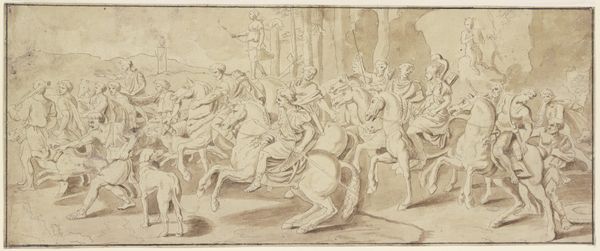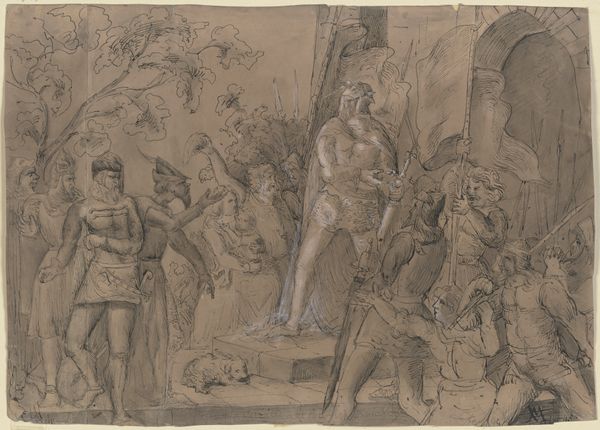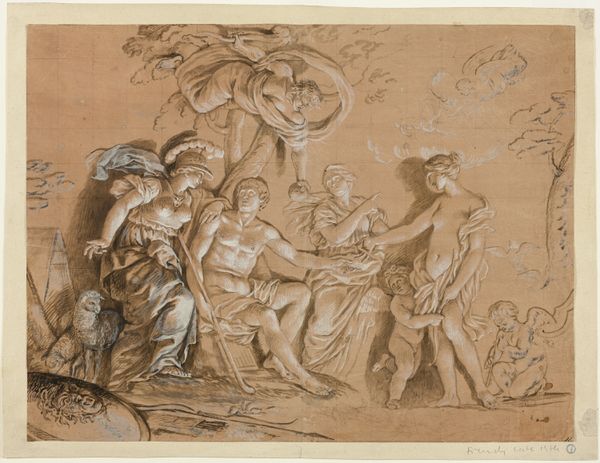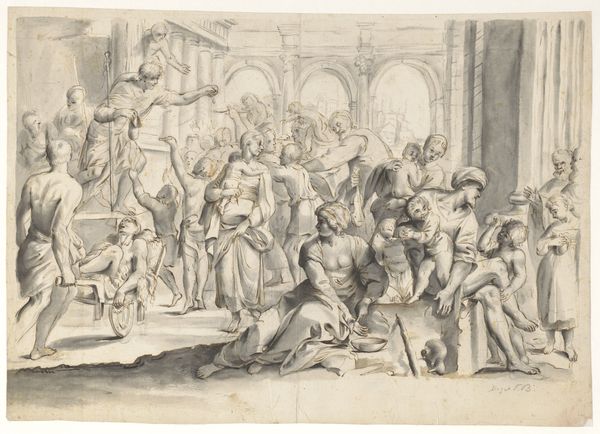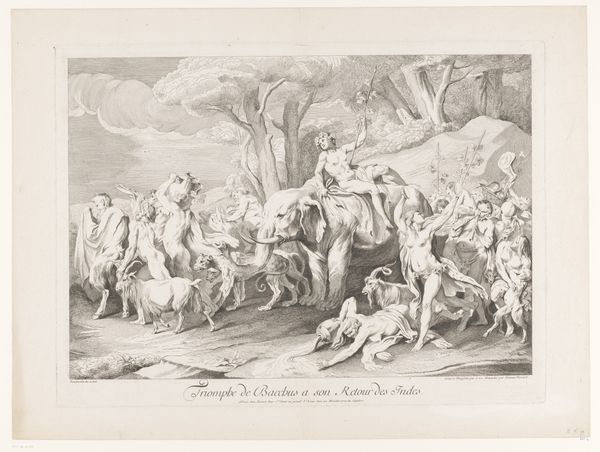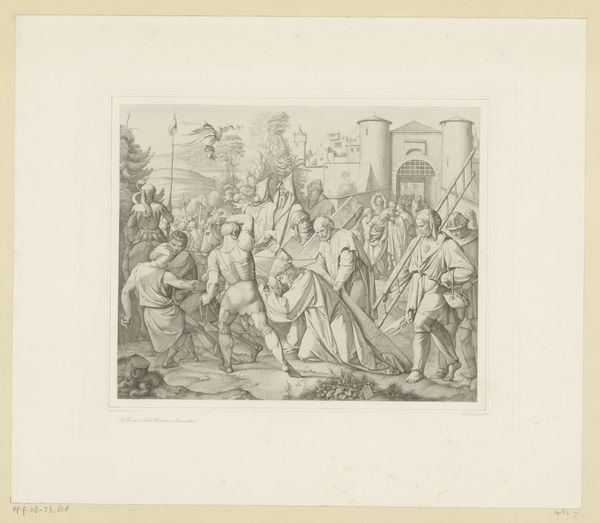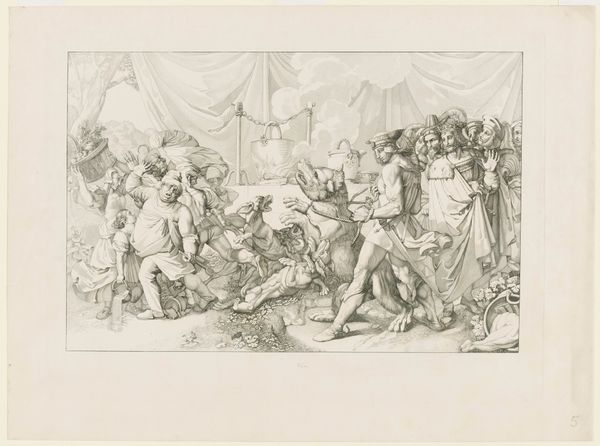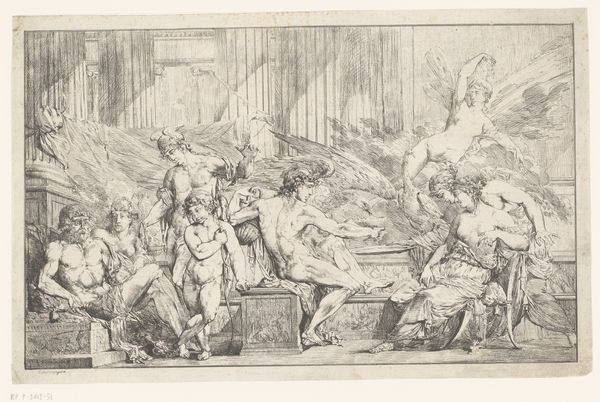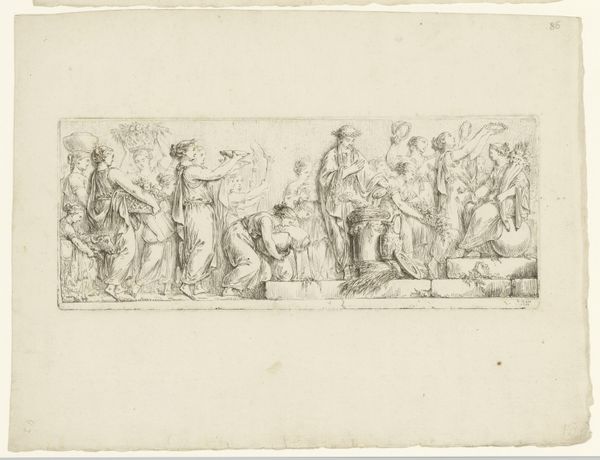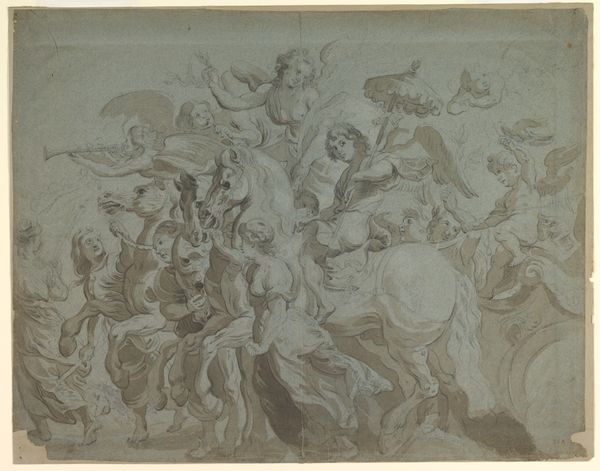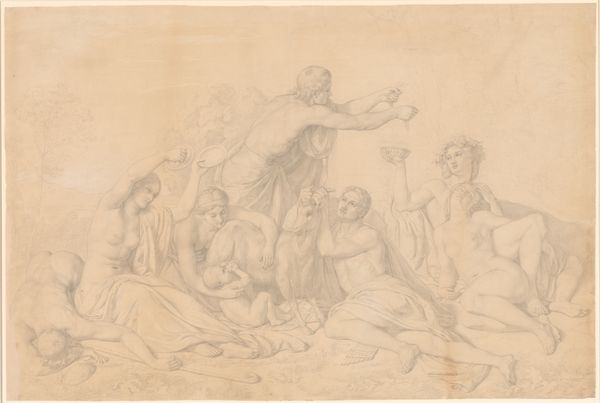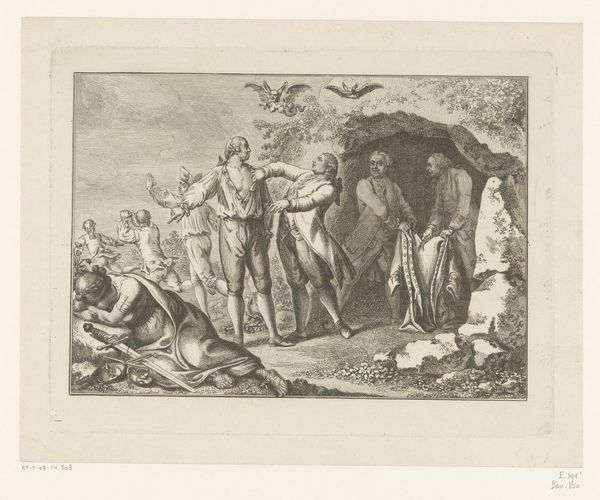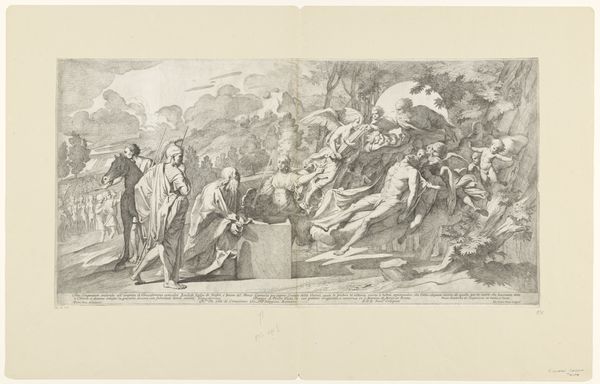
drawing, ink
#
drawing
#
allegory
#
baroque
#
ink
#
history-painting
#
nude
Dimensions: height 367 mm, width 475 mm
Copyright: Rijks Museum: Open Domain
Curator: Look at this 1659 ink drawing by Moses ter Borch, currently held at the Rijksmuseum. It's titled *The Sacrifice of Iphigenia*. Editor: The dynamism here is immediate, despite the monochrome palette. The stark contrast between light and shadow focuses our eyes, doesn't it? All action seems oriented towards this singular, anguished figure. Curator: Indeed. Ter Borch translates the ancient Greek myth—Agamemnon sacrificing his daughter to appease Artemis and secure favorable winds for the Trojan War—into the visual language of his time. See how Artemis intervenes in the top left corner, sending a deer to take Iphigenia's place. It is a history painting that employs allegory, playing with elements of fear, fate, and divine intervention. The symbolic weight of this moment continues to resonate deeply. Editor: Absolutely. Ter Borch organizes his composition around verticals and horizontals—the altar, the steps, even the spears held aloft create this rigid, almost oppressive grid against the flailing figures. He accentuates the architectural backdrop and ceremonial vessels, juxtaposing them against the nudity and raw emotion displayed by the figures to establish the sacred nature of this ritual and reinforce Baroque themes. The architectural detail also reinforces this concept that history and religion provide order over base emotions. Curator: It's a potent moment, yes. That deer is pivotal, the symbol of substitution and Artemis' mercy interrupting the inexorable march of fate. You get the full emotional weight of patriarchal decisions here, along with a potent statement about religious practices, and nakedness in relation to feminine identity. Iphigenia is not centered for the male gaze, instead a feminine figure vulnerable to larger powers and traditions. Editor: While the content strikes one's eye instantly, his handling of light intrigues me equally. Notice how skillfully he guides the eye, creating both tension and an invitation to dwell on crucial elements within the broader context of Baroque painting. Curator: I agree, Moses ter Borch invites us to reflect on timeless human dramas while making a statement on religious structures. Editor: I see a structured Baroque technique expressing the enduring struggle between individual will and larger systems. Both poignant and revealing.
Comments
No comments
Be the first to comment and join the conversation on the ultimate creative platform.
